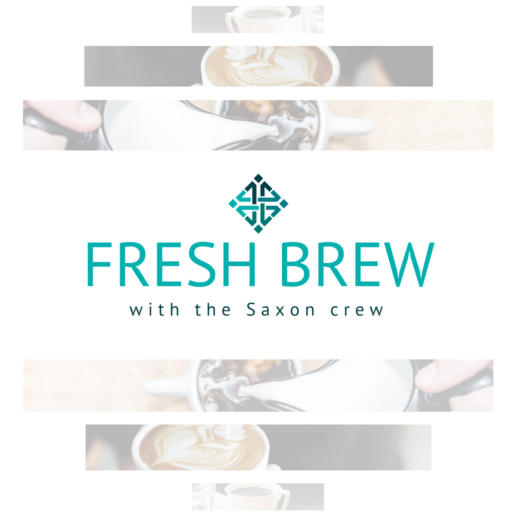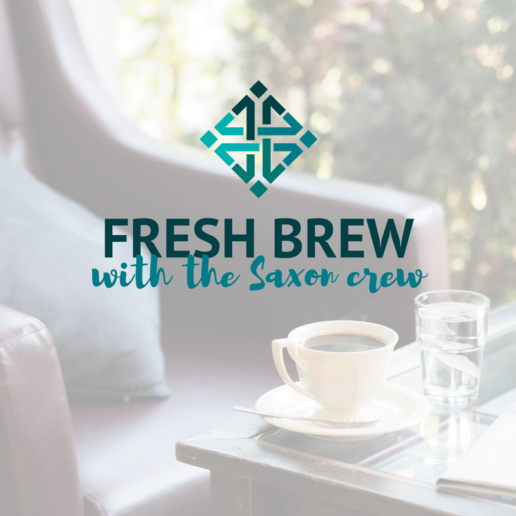Polishing Your Resume to Make the Best Impression
Writing a resume can be stressful due to it creating the first impression to a potential employer. With wanting to make the first impression count, it's important to revise and polish your resume to show the right story in regards to a career. Read this blog post to learn more.
Your resume is your introduction to a potential employer. Make that first impression count, because it will determine whether the employer wants to interview you.
Take the time to revise your resume until it tells the right story about your career and how you can do the job the employer needs filled. A resume never springs complete in a single draft from anyone's keyboard.
Does My Resume Tell the Right Story?
As you write, rewrite, polish and otherwise revise your resume, regularly refer to your target job deconstruction, which clearly outlines the story your unique resume needs to tell. When you feel the story that you're telling is clearly focused and complete, review it against these questions:
- Are my statements relevant to the target job?
- Where have I repeated myself? Is the repetition redundant or does it make my resume stronger?
- Is every paragraph focused on the employer's needs?
- Can I cut out any sentences? Or, can I shorten a long sentence? Can I break that one long sentence into two short ones?
Short sentences pack more punch. And: If in doubt, cut it out!
Let's review the sections of the resume to make sure you've got all the parts of your story in order. Download this template for help.
Target Job Title
Use a headline to draw readers in. Do you have a target job title that echoes the words and intent of the job descriptions you collected when deconstructing your target job?
Performance Profile/Summary
This short paragraph follows the target job title and reflects the priorities and language used in typical employer postings for this job. Keep this summary to no longer than seven lines—just list the "must haves" of the job. Also keep it short because dense blocks of type make reading harder. If your profile/summary runs longer, cut it into two paragraphs or one paragraph that's followed by bullets.
Professional Skills
List the skills you bring to your work that support the statements made in the preceding performance profile section. Prioritize the skills so the most important come first.
Chronology
Your work history should start with your most recent job and work backwards. Make sure each entry emphasizes relevant experience, contributions and achievements. Can you include endorsements of your work, if they are relevant? Leave out lists of references and only mention they are available upon request.
Achievements
In all of the above entries about your work experience, whenever you can, give examples of doing your job efficiently and well, and emphasize these achievements with examples. Quantify your examples whenever you can and make them easy to read by listing them in bullet points. You can encourage a reader to call you for an interview by telling what you've done, but not explaining. Create a reason for starting a conversation.
Education
Your educational record usually comes at the end of the resume and starts with your highest level of education. It should also include professional courses and accreditations that support your candidacy. However, if you work in education, law, medicine, sciences or other professions that put an emphasis on academic accreditations, your educational attainments will usually come at the beginning after the target job title and professional profile.
Much of the success of a project is determined by the amount of preparation put into it, and this is where the prep work gets done on your resume. I once worked with a senior HR partner on a resume and strategic career transition, and, before the job was finished, we had completed eight revisions, each one giving us just a little tighter focus and that much more punch. It took about two and a half weeks, but generated eight interviews in seven days, one of which landed her a senior position at Microsoft.
SOURCE: Yate, M. (16 June 2020) "Polishing Your Resume to Make the Best Impression" (Web Blog Post). Retrieved from https://www.shrm.org/resourcesandtools/hr-topics/organizational-and-employee-development/pages/polishing-your-resume-to-make-the-best-impression.aspx
The Saxon Advisor - June 2020
Compliance Check
what you need to know
Eligible Automatic Contribution Arrangement (EACA). For failed ADP/ACP tests, corrective distributions must be made towards participants within 6 months after the plan year ends – June 30, 2020.
SF HSCO Expenditures. The last day to submit SF HSCO expenditures, if applicable*, for Q2 is July 30, 2020. *Applicable for employers with 20+ employees doing business in SF and Non-Profits with 50+ employees.
Form 5500 and Form 5558. The deadline for the 2019 plan year’s Form 5500 and Form 5558 is July 31, 2020 (unless otherwise extended by Form 5558 or automatically with an extended corporate income tax return).
Form 8955-SSA. Unless extended by Form 5558, Form 8955-SSA and the terminated vested participant statements for the plan year of 2019 are due July 31, 2020.
Form 5558. Unless there is an automatic extension due to corporate income tax returns, a single Form 5558 and 8955-SSA is due by 2½ months for the 2019 plan year.
Form 5330. For failed ADP/ACP tests regarding excise tax, Form 5330 must be filed by July 31, 2020.
401(k) Plans. For ADP/ACP testing, the recommended Interim is due August 1, 2020.
In this Issue
- Upcoming Compliance Deadlines:
- Eligible Automatic Contribution Arrangement (EACA)
- The deadline for the 2019 plan year’s Form 5500 and Form 5558 is July 31, 2020.
-
Medicare 101: A Quick Guide For Employers
- Fresh Brew Featuring Abby Graham
- This month’s Saxon U: The Steps Of An Internal Investigation
- #CommunityStrong: Pick your Own Charity! One of our Own, Deborah Raines, made a meal for a family in need at her temple!
The Steps Of An Internal Investigation
Join us for this interactive and educational Saxon U seminar with Pandy Pridemore, The Human Resources USA, LLC, as we discuss the steps of an internal investigation.
Medicare 101: A Quick Guide For Employers
Bringing the knowledge of our in-house advisors right to you...
Medicare is a governmentfunded health insurance program for those aged 65 and above, those under 65 with certain disabilities, and those with End State Renal Disease (ESRD) or Amyotrophic Lateral Sclerosis (ALS). Employers that offer group health insurance plans to their employees have an interest in learning how employees’ entitlement to Medicare benefits can affect the administration of those plans.
“Ask a licensed agent for assistance. Advertisements can be confusing, and everyone wants to make the right choice. Using my expertise, I take the fear out of the decision making, so my clients can make an informed decision concerning their healthcare.”
Fresh Brew Featuring Abby Graham
"It’s not that hard to be well!"
This month’s Fresh Brew features Abby Graham, Wellness Director at Saxon.
Abby’s favorite brew is Coffee. Her favorite local spot to grab her favorite brew is Coffee Emporium.
Scott’s favorite snack to enjoy with his brew is Reese’s Pieces Cookies.
This Month's #CommunityStrong:Each member of Saxon will be choosing their own charity that they want to make a positive impact on!
This May, June & July, the Saxon team and their families will be choosing their own charity that they would like to make a positive impact towards!
Are you prepared for retirement?
Saxon creates strategies that are built around you and your vision for the future. The key is to take the first step of reaching out to a professional and then let us guide you along the path to a confident future.
Monthly compliance alerts, educational articles and events
- courtesy of Saxon Financial Advisors.

Fresh Brew With Abby Graham
Welcome to our brand new segment, Fresh Brew, where we will be exploring the delicious coffees, teas, and snacks of some of our employees! You can look forward to our Fresh Brew blog every month.
“It’s not that hard to be well!”
Abby Graham is a Wellness Director for Saxon Financial Services.
Abby has been in the insurance, health, and wellness industry for over 12 years. Prior to joining Saxon, she spent 7 years working for Humana/HumanaVitality. In her spare time, Abby enjoys sewing and quilting. She also enjoys spending time with her husband, Jon, and her two sons, Carter and Cameron.


Coffee
Abby’s favorite brew is coffee from Coffee Emporium!

Reese’s Pieces Cookies
Abby enjoys sipping on her favorite brew while eating Reese’s Pieces Cookies!
SHRM: Employers Consider Safety Precautions for Return to Workplace
As employers begin to look at what lies ahead in regards to returning to the workplace, they also have to begin looking at what precautions they need to consider in order to keep the workplace safe for everyone involved. Read this blog post to learn more.
Nearly half of organizations surveyed have not announced a return-to-work date as COVID-19 restrictions ease in some parts of the country, but a majority of HR professionals think setting even a tentative date is a good idea.
The findings from new Society for Human Resource Management (SHRM) research released June 9 illustrate how U.S. employers are considering a phased return of employees, staggered start and stop times, health precautions, and physical changes to their worksites.
Setting a return date is a good idea, two-thirds of HR professionals said, because it eases job-security concerns among staff, especially for those in physical and service industries such as health care, retail and education. Employers that have established a date prefer employees to return on or before June 30, according to more than three-fourths of HR professionals.
Much of what an organization decides to do depends on its size and industry.
Large employers—those with 500 or more employees—were less likely to have announced a return date. This was especially true in knowledge industries. However, organizations in those industries—finance, consulting, engineering and administrative services companies—also were more likely to let employees continue to work from home and determine when they want to return to the worksite.
Industries where the work is more physical—construction, manufacturing and transportation—were more likely to have already reopened their physical locations and to implement an alternating work schedule.
Other strategies include:
- Staggering the start and stop of employees' workdays as well as break times so as to reduce the number of workers in one location at the same time (75 percent).
- Reducing the number of customers permitted on site at one time and taking measures such as counting the number of people as they enter (78 percent).
- Limiting the number of employees or customers on site at one time (81 percent).
The research is based on a SHRM survey that collected responses May 13-20 from a random sampling of 1,087 SHRM members working in HR. Academicians, students, consultants, people who are self-employed or retired, and HR professionals who were furloughed or laid off were excluded from the sample.
“This research gives a glimpse into how COVID-19 has changed the world of work, and what workplaces will look like once we return,” said Johnny C. Taylor, Jr., SHRM-SCP, SHRM's president and CEO. “Workers should expect to see more masks, fewer handshakes, marked floors, more barriers, and greater flexibility—especially when it comes to remote work.”
Among employers implementing a phased-return plan, one-third intend to do so by specific departments or functions. Others are first bringing back employees with lower health risks or those in leadership positions. The length of the phased return also varies, from two weeks to more than three months.
"Getting back to work takes a lot of work," Taylor noted, "and HR professionals have played an essential role in drawing up plans that drive organizations forward and protect public health.”
SOURCE: Gurchiek, K. (09 June 2020) "SHRM: Employers Consider Safety Precautions for Return to Workplace" (Web Blog Post). Retrieved from https://www.shrm.org/hr-today/news/hr-news/pages/shrm-employers-consider-safety-precautions-for-return-to-workplace.aspx
Don't Be Silent: Expert Tips to Defuse Workplace Tensions
During the crazy times that society is facing, workplaces are beginning to see tensions due to it. Read this blog post for tips on diffusing tension in the workplace.
In these days of high emotion and polarization, it's hard to know how or even whether to address the feelings of anger, despair or frustration that may be percolating among employees at the workplace. But it would be a mistake for company leaders and managers to stay silent, said Eric Ellis, a longtime consultant on diversity and inclusion.
Today's crises have frayed nerves and opened wounds.
"None of us is unaffected by this," said Ellis, president and chief executive officer of Integrity Development Corporation in Cincinnati and a speaker at the 2020 SHRM Talent conference. He advised employers to have a plan for managers to de-escalate conflict and build common ground. "If we don't prepare our people to have this conversation, we're leaving ourselves open to micro-explosions."
What is called for is empathetic support, with conversations guided by the "core values that companies adopt and post but are at times challenged to live," he said.
"A neutral leadership style is not very helpful during a crisis. Organizational leaders must assess their personal beliefs and feelings first and then expand beyond them. The most effective leaders find ways to support employees who have perspectives that differ from their own."
Ellis, who has consulted with businesses, advocacy groups and law enforcement organizations across the country, said HR professionals can play a crucial role in maintaining a respectful workplace.
"The kind of people-centered sensitivity needed at this time, in many ways, is baked into their training and professional DNA," he said.
To help provide a framework for opening and guiding productive conversations, Ellis offered the following tips:
Start with yourself. A good place to begin is by acknowledging your personal biases as well as what's taking place in our country and demonstrating empathy for those experiencing hurt, anger, sadness or disappointment.
Recognize different perspectives. People come to the workplace with a variety of perspectives on the ongoing unrest. Ellis suggested that these perspectives fall into four broad categories:
Justice requires action. Strong supporters of the protesters. They may have personal experience with injustice or are closely affiliated with people who directly experienced unfair and/or heavy-handed policing.
Nonviolent protest supporters. General supporter of protest but uncomfortable with rioting, looting and violence.
Don't protest; a few bad apples. People who believe George Floyd's death was wrong but not worthy of this response. They generally believe that every organization has a few people who abuse power or are negligent.
Loyal to the system. People who generally side with law enforcement and believe these protests demonstrate the need for more control, law and order.
Ellis recommends that leaders lean their support closer to the perspectives of those employees in the first or second categories, to align with the tradition of supporting peaceful protests for civil rights in this country, and also to acknowledge the well-documented history and ongoing examples of racial injustice, which is reflected in intense acts of solidarity with protestors from around the world. However, he added, leaders should remember the importance of being inclusive and protecting the rights of employees with beliefs closer to the third or fourth categories. No one should feel disrespected, blamed or harmed in the workplace due to their personal perspective, he said.
Teach empathetic listening and de-escalation skills to your entire workforce. People need these critical skills to communicate effectively with their co-workers, even when they disagree.
Empathetic listening requires people to avoid engaging in point-counterpoint debates. They need to display open body language. The listener begins by paraphrasing comments shared with him or her, beginning with a tentative opening such as "Let me see if I'm understanding what you're saying." This is followed by a summary of both the content of the message shared and the feelings expressed. The final step is to check for accuracy, to ensure that the listener accurately restated the message shared by the co-worker. Employees can engage in empathetic listening even when they disagree with the perspective shared by their co-worker.
Arrange for company-sponsored listening sessions. It can be helpful to provide employees with a safe forum to express their feelings and concerns with their co-workers. It may be necessary to engage external experts experienced at successfully facilitating these types of conversations. The ultimate objective is to provide solutions that improve employees' ability to effectively manage their feelings and anxiety in order to reduce the impact on their emotional health and workplace effectiveness.
Provide counseling support. Make sure to have counseling resources available for employees who may need assistance with their mental and emotional well-being as a result of stress and anxiety related to these massive national and global issues.
Strengthen inclusion efforts, don't pause them. Strengthen current commitment and engagement efforts with inclusion strategies versus pausing them. All companies should take a hard look at their own culture to ensure that they are strategically working to create workplaces that are fair and inclusive of diverse employees in general and racially diverse employees specifically. If an organization conducts a legitimate assessment, it will include the identification of several areas where bias has limited the opportunities available for employees of different racial backgrounds and other diverse characteristics and traits.
SOURCE: Cleeland, N. (07 June 2020) "Don't Be Silent: Expert Tips to Defuse Workplace Tensions" (Web Blog Post). Retrieved from https://www.shrm.org/resourcesandtools/hr-topics/employee-relations/pages/dont-be-silent-expert-tips-to-defuse-workplace-tensions.aspx
How to Help Your Team Advance
With many managers wanting to help their employees expand their skill set and talents, they are continuously working side by side with their employees to define their goals and achievements. Read this blog post to learn more.
Working for a company that invests in career development is often a top priority for employees, and if the company doesn't provide those opportunities, employees will take their talents elsewhere. A 2019 iHire survey found that 51.7 percent of professionals voluntarily left their job in the past five years. One of the reasons professionals cited for quitting was the lack of advancement opportunities (reported by 11.7 percent of respondents).
Managers can help combat this talent drain by working with their direct reports to define the employees' career goals and then help them achieve those milestones. "If you want the best team and want them to perform at their highest level, you have to invest in developing them," said Iris Drayton-Spann, SHRM-CP, vice president of human resources and organizational development at WETA, a public television station in Arlington, Va. "Then they will bring their 'A' game."
Investing in your team doesn't necessarily mean paying for high-priced training programs. There are plenty of low-cost and free development opportunities managers can offer employees, such as suggesting certain trade publications to read, or introducing them to a staff or board member who is a subject matter expert or thought leader in a field they want to pursue, said Jody Fosnough, SHRM-SCP, a senior consultant and executive coach for Right Management, a leadership development firm in Fort Wayne, Ind. The key is to find out what skills each team member is looking to develop or what type of position he or she hopes to grow into.
Ask Thought-Provoking Questions
Drayton-Spann carves out 45 minutes every two weeks to talk with her four team members individually about their goals, training needs and anything else they want to discuss about their work. It's up to each employee, though, to set the agenda and tone for the meeting.
"Some of the meetings are casual, some are very formal," she said. "I listen to them, they ask me questions, and then I ask them questions. It gives them ownership over their career development. It's not me telling them what to do." If they make a commitment to work on a project, meet with a mentor or look into a professional membership organization, Drayton-Spann follows up with them at the next meeting to see if they completed the task and to figure out what the next step will be toward their milestone.
To help employees set realistic goals, Fosnough said, managers need to ask more pointed questions than simply "What do you want to do?" Ask employees questions that force them to think critically about their strengths:
- What's a compliment you received about your work?
- What recent problem have you solved?
- How have you surprised others on your team?
- What are you most proud of this month?
These questions will help employees to consider why their colleagues value their work and help them see what types of roles they should gravitate toward in the future.
Find In-House Opportunities
One of the best ways to help team members advance is to invite them to work on a stretch assignment—a task outside their job description—that allows them to learn new skills or interact with colleagues they normally wouldn't have access to, Drayton-Spann said. Instead of telling an employee to take on a new project, Drayton-Spann asks the employee to work with her on a project. She also takes time to explain how the project would benefit the employee's career. Perhaps the worker will learn a new skill or have an opportunity to interact with members of the C-suite, she said.
In addition to stretch assignments, managers can offer plenty of other in-house opportunities to help employees grow into a new position, including cross-training with another department, telling other managers at the company about an employee's strengths, and allowing an employee to shadow someone who holds a position he or she is interested in growing into, said Kimberly Coan, a 20-year HR professional in the Dallas area. Job shadowing allows employees to learn what skills they might need to develop and the type of training they should focus on. And sometimes it reveals that a position they're interested in isn't actually a good fit for their skills, she said.
Career development can also focus on soft skills and help the employee gain confidence. For instance, an employee once asked Coan how to become more comfortable interacting with company leaders outside his immediate department. Coan encouraged him to invite a regional director out for coffee and ask the director how to best help the employee's department director do her job.
If an employee asks to participate in a specific training program, make sure it's appropriate for the employee's goals, said Andrea Raggambi, CEO at PerforMore Coaching and Consulting, a leadership development firm in Falls Church, Va. Often employees will want to earn a certificate or participate in a training program because they heard another colleague just completed the program.
"Sometimes they see their colleagues do certain things, and they think that is the correct career path for them even if it's not," she said. Ask the employee to explain why he or she believes the training will help achieve his or her career goals, how it will have a positive impact on the team, and how it will help advance the company's overall mission, Raggambi said.
Keep Plans Flexible
Keep in mind that not all employees will be interested in advancing their career. Some employees are content staying in the position they have, and managers need to respect that, Coan said. There might be reasons outside of work that influence their decision not to pursue a promotion. For instance, they might be taking care of an aging parent or sick child. But, Coan said, keep in mind that just because employees aren't interested in career development today doesn't mean they won't be interested in three months or a year from now.
Employees' goals can change. Raggambi recommends asking employees to revisit their career plans every three to six months. Managers should always ask, "Does this career plan still look good for you? Are you still excited and energized by this?" It's important to allow employees to reassess their plans and make adjustments.
SOURCE: Rabasca Roepe, L. (09 June 2020) "How to Help Your Team Advance" (Web Blog Post). Retrieved from https://www.shrm.org/resourcesandtools/hr-topics/people-managers/pages/developing-your-employees-.aspx
Companies prioritize learning and development in the wake of coronavirus crisis
In the midst of the coronavirus pandemic, many employees are still working remotely, which may cause a lack of learning and development in their careers. Many companies are now prioritizing their employees learning and development. Read this blog post to learn more.
As the coronavirus pandemic creates uncertainty within the workforce, more employers are investing in learning and development as they seek to keep their remote employees engaged and promote strong mental health. Indeed, 66% of learning and development professionals say that their roles within their organizations have grown substantially in the wake of the COVID-19 crisis, according to a recent LinkedIn Learning report.
Of the 864 development professionals and 3,155 workplace learners — employees who interact with learning content provided by their employers — surveyed, 68% of learning and development professionals say employers have been placing a larger emphasis on launching learning programs designed to teach employees new skills with an eye on boosting internal mobility.
“The appetite for learning coupled with the fact that the needs of remote employees have shifted, has created a spotlight on L&D to develop and deliver the sorts of engaging and relevant learning experiences that employees want and need during this challenging time,” says Mike Derezin, vice president of LinkedIn Learning.
To that end, companies are investing in technologies including virtual instructor-led training (VILT) — live training done digitally, and online learning — recorded digital learning content. The report found that 66% of learning and development professionals expect to spend more on VILT than they did last year, with 60% saying the same for online learning. Furthermore, the report says that developing the right mix of VILT and online learning — blended online learning — will be essential going forward.
“Blended online learning is especially beneficial for employees during a time where they feel isolated because it’s a form of social learning,” Derezin says.
The LinkedIn Learning platform has seen a 301% rise in enrollment and a 153% increase in courses shared between members and their networks in March and April, compared to January and February of this year.
“We’re also seeing instructors engaging more, and companies tapping subject matter experts to create learning moments. What’s more, social learning drives up learner engagement and helps learners remember content,” he says.
About 75% of the professionals surveyed by LinkedIn expect social learning, including online learning groups, to increase over time and play a large role in their organizations.
Employers are placing strong emphasis on reskilling the workforce. Since the coronavirus hit the U.S., nearly 43 million Americans have filed for unemployment, having lost their jobs when businesses were forced to close down in an effort to promote social distancing.
“Employers are still focused on keeping high-value employees, even when faced with the task of moving them into new positions as a result of changing business dynamics,” Derezin says.
One employer that took this approach was tech retailer Verizon. When the company had to close down some of its retail locations it allowed many of those employees to apply transferable skills to other areas of the business. Verizon gave employees a choice of career paths and then implemented personalized learning, with the goal of enabling these workers to close any skills gaps before moving on to new roles.
“By offering online tools and training, Verizon was able to help brick-and-mortar employees work from home and contribute in roles like customer service,” he says.
The LinkedIn research also shows that 69% of learning and development professionals feel responsible for their employees’ mental health and well-being. Over the last several years, employers have become more focused on supporting employee mental health as it is a strong attraction and retention tool, and as employers realize that supporting employees is about work-life integration, rather than work-life balance.
PayPal has had success with practices that support employee mental health, like holding more frequent all-hands meetings, promoting company-wide access to its executives, and conducting weekly wellness surveys.
As employers and employees navigate the new normal of the workplace, managers are expected to become more active in curating content that will help build up the skills of their workforce. In March and April managers were spending twice the amount of time on learning and development than they did in January and February.
“With the rise of AI, remote work, and widening skills gaps, the value of an always-on learning culture has never been more clear,” Derezin says. “By supporting learners in the moments that matter to their present and future careers, you’ll not only have happier employees, but retain them.”
SOURCE: Del Rowe, S. (05 June 2020) "Companies prioritize learning and development in the wake of coronavirus crisis" (Web Blog Post). Retrieved from https://www.benefitnews.com/news/companies-prioritizing-learning-and-development-in-the-wake-of-coronavirus-crisis
Antibody Testing for COVID-19 in the Workplace
Many employers have heard of various workplaces testing for antibodies in regards to COVID-19. As businesses are wanting employees to feel confident in returning to the office, there are still various unanswered questions in regards to the testing. Read this blog post to learn more.
Many companies are considering offering their employees antibody (Ab) testing for SARS-CoV-2, the virus that causes COVID-19. While businesses want employees to be confident about returning to work, and the government wants better estimates of infection rates, there are still many questions about the value, reliability and usefulness of the testing.
The Basics of Antibody Testing
Ab testing uses a blood sample to look for antibodies the immune system develops to fight SARS-CoV-2. The test may show the presence of antibodies, an indicator of a likely past SARS-CoV-2 infection. Negative results indicate that a past infection is not likely. Neither result confirms whether the individual is currently infected (asymptomatic or otherwise), and Ab tests should not be used to diagnose whether someone is presently infected with COVID-19.
It typically takes 10-18 days following infection for the body to produce enough antibodies to be detected. A positive result does not indicate whether the detected antibodies can provide any protection or immunity against becoming infected again.
The U.S. Food and Drug Administration (FDA) has so far barred test producers from selling the tests to the public. Ab tests for SARS-CoV-2 must be administered by a federally approved health care provider or research group. For more information, see this guidance on the World Health Organization website, as well as this information from the FDA.
What Are Antibodies?
The presence of antibodies to any virus confirms past exposure to that virus or the receipt of a vaccine for it. The body remembers that exposure and will recognize the virus if exposed again. Antibodies take time to develop into their role as the body's biological memory of past infections. Because many of us have not been exposed to this new coronavirus, our immune systems have no memory of it.
Those who may have antibodies for SARS-CoV-2 may not necessarily be able to fight off a second infection. To do that, the body needs sufficient numbers of antibodies, and they need to be effective. The degree to which people with coronavirus antibodies are protected from getting COVID-19 a second or third time is still unknown. Broad use of Ab tests and clinical follow-up will provide these answers. According to the U.S. Centers for Disease Control and Prevention, "we do not know yet if having antibodies to the virus that causes COVID-19 can protect someone from getting infected again or, if they do, how long this protection might last. Scientists are conducting research to answer those questions."
If the antibodies are effective in causing immunity, we must also determine how long they might last in the body. Other coronavirus antibodies tend to last a few years. Those for the common cold can last only a few weeks or months. After the SARS coronavirus outbreak in 2003, one study found that only 9 percent of people had antibodies six years after getting sick.
Next Steps for Employers
Currently, there are many reasons why employers might hesitate to pursue Ab testing for employees. Ab tests only look backward, and most people will already know if they had COVID-19. Some physicians insist that test results offer little guidance on how or when to reopen workplaces, and organizations shouldn't modify policies or procedures based on test results. They argue that safety procedures should remain the same regardless of Ab test results. Unfortunately, testing may make things worse, as some people who test positive for having antibodies may relax social distancing and sanitizing in the belief that they are now immune.
Knowing what to do with the test results is the primary dilemma. Encouraging blood draws and testing among employees may not be a compelling pursuit for companies until we know what to do with the results. Major questions remain:
- Quantity. We don't know the degree to which people infected by the coronavirus develop antibodies. Some may never develop antibodies. Figuring that out requires longer-term studies of who gets reinfected.
- Effectiveness. We don't know the degree to which the antibodies provide immunity and protection.
- Consistency. We don't know how consistently these antibodies provide protection from person to person.
If Ab testing in the workplace is used, it should be accompanied by a clear explanation of what the results might indicate about the employee's past health and what they do not indicate about the employee's present and future health status.
SOURCE: Musselman, K. (29 May 2020) "Antibody Testing for COVID-19 in the Workplace" (Web Blog Post). Retrieved from https://www.shrm.org/resourcesandtools/hr-topics/risk-management/pages/antibody-testing-for-covid-19-in-the-workplace-.aspx
Remote Workers Experiencing Burnout
With many employees working remotely, productivity may decrease and the feeling of being burnt out may increase. As working remotely continues to draw out through many months, many employees may continue to feel this way, as well. Read this blog post to learn more.
Recent polling shows a significant share of the U.S. workforce is feeling burned out after more than two months of working from home during the coronavirus outbreak.
About half of 1,251 respondents in a survey conducted in May by job-search and careers website Monster said they were experiencing burnout. Even before COVID-19 upended workers' lives, the World Health Organization had classified burnout as an "occupational phenomenon" and a hazard.
"The COVID-19 pandemic has changed how we work, where we work, resulted in clashes between our work and home lives like we've never had before, and really has become a big stressor," said Melissa Jezior, president and CEO of Eagle Hill Consulting, a Washington, D.C.-based management consulting firm.
Binita Amin, a clinical psychologist in Washington, D.C., warned that the dangers of burnout are typically greater than just feeling stressed. "Stress is something that is resolved and has some sort of closure, and with burnout there's no real end in sight, so it's significant and chronic in nature," she said. "What happens over time is you start to see that a person's mental, physical and emotional resources are exhausted and depleted. In the work context, you can see it in terms of decreased productivity, difficulty concentrating, and certainly feelings of disillusionment or cynicism."
In a survey of 1,000 workers polled by Eagle Hill in April, 50 percent said they feel less connected to colleagues, 45 percent feel less productive, and 36 percent feel less positive about their careers.
The particular stressors brought on by COVID-19 include overworking and adapting to new ways of working; caring for children in the absence of school or day care; job insecurity; health concerns; isolation; and the lack of clear boundaries between work and home, said Vicki Salemi, a careers expert for Monster based in New York City. "People have also lost many of the ways they used to manage stress, such as spending time with friends, going to concerts and sporting events, and going to the gym," she said.
The Monster poll did find that almost three-quarters of respondents (71 percent) are making an effort to take time for themselves during the workday, such as taking a break or going for a walk. But over half of respondents (52 percent) said they are not planning to take extended time off or vacation despite facing burnout.
Salemi said that people may be reluctant to book a vacation because of financial reasons, the fear of being perceived as not being productive, or concerns about public safety. "Some people are just not ready to go to the beach, while other destinations, like amusement parks, are not really open for business," she said.
"Even if you're not going anywhere, you earned PTO [paid time off], and you should take it," she encouraged. "Using PTO doesn't necessarily mean you have to get on an airplane and fly away somewhere. It can mean taking a staycation. Perhaps people are thinking, 'Well, I'm already home, and I don't need a staycation,' but the reality is that we all need to log off."
She said there are ways to creatively take PTO, such as taking off every Monday or Friday in the month of July, for example.
Employers' Role
Employers can play a big part in helping address burnout among their employees, experts said. Affinity groups and employee assistance programs should be promoted as helpful resources, but there's even more that managers can do, according to Amin. "There's real opportunity to empower your employees to feel more sense of control over things like schedules, workload and types of work assignments, and even influencing things like meaningful connection," she said.
Lack of control is a prime factor of burnout, Jezior said. "Right now, there is a lot outside of our control. But I think one way we can help ground employees is to give them the autonomy and the ownership over how and when they complete their work."
Salemi recommended getting feedback from employees about their workload and work-from-home processes to make sure expectations are aligned and they feel supported. She stressed that managers and leadership should lead by example and encourage employees to take advantage of flexible work options.
"Make an announcement to the team or the organization that it's OK to take time off, even without having someplace to travel to," she said. "Encourage them to take time off."
SOURCE; Maurer, R. (29 May 2020) "Remote Workers Experiencing Burnout" (Web Blog Post). Retrieved from https://www.shrm.org/hr-today/news/hr-news/pages/remote-workers-experiencing-burnout.aspx
What Your Youngest Employees Need Most Right Now
During the trying times that the coronavirus has placed upon the workforce, it seems to be creating a bigger unknown difficulty in younger employees. Read this blog post to learn more.
The long-term toll of the coronavirus is unknown, but its effects on our health care system and the economy have already been catastrophic. And while the immediate concerns of skyrocketing unemployment and a stalled economy must be addressed today, employers also need to begin considering how to rebuild for the employees returning to the workforce — or entering it for the first time.
This includes Gen Z, the youngest members of the workforce and those currently in secondary school or college. Many who were just beginning their career journey have been furloughed or fired. Those in school were suddenly confined to their homes. Collectively, they are experiencing the greatest national trauma since the Great Depression and World War II.
Ultimately, for the workforce to be equipped to move forward and thrive, employers will need to address the fallout resulting from Covid-19 on their youngest — and future — employees.
How Events Shape Generations
As the Pew Research Center notes, looking at world events and other formative experiences through a generational lens helps provide an understanding of how people’s views of the world are shaped. Young people who grew up during the Great Depression and defended and supported the nation in World War II were coined “The Greatest Generation.” Once past the traumas of these extraordinarily difficult years, this generation shared characteristics that included a patriotism manifested by reverence for American ideals, a belief in the wisdom of government, and a frugality born of severe want.
For Millennials, the horror of 9/11 and the global economic crisis that began in 2007 were calamitous events that were life-altering for their generation. As many were sitting in classrooms, word of airplanes crashing into buildings spread through their school; frightened teachers, family members, and friends were unable to offer their usual reassurance that everything would be okay. The chaos that followed became the touchstone for a future where potential terrorist attacks were an ever-present theme in the way Millennials interacted with the world around them.
As they later began to make their way into the workplace, the economy collapsed. Job offers were rescinded, full-time opportunities became part-time without benefits, and many new hires were the first fired. A generation with an undeserved reputation for disloyalty had to change jobs frequently simply to keep up with basic bills and crushing student debt. Together, these experiences contributed to a profile of a generation more likely to seek order in their world and meaning in their work.
Today, even as the coronavirus has been merciless in its impact on people of all ages, the long-term effects on the Gen Z cohort of adolescents are likely to be particularly severe.
For the rest of their lives, the time the world stopped will be seared in Gen Z’s collective memory, a generation-defining moment that instilled deep fears about their uncertain future. Overnight, they lost their daily interactions with the teachers who trained them, coaches who mentored them, clubs that fulfilled them, and friends who sustained them through the painful ordeals of youth. Milestones such as proms, plays, athletics, and the ritual of graduation can be crucial to social and emotional development, each experience serving as a rite of passage to the next stage of life. These lifecycle markers of adolescence that were nervously anticipated and excitedly shared swiftly vanished.
How Companies Can Support Gen Z Employees
It will be years before sufficient data exist to quantify the full impacts of this experience on Gen Z. Existing research, however, can help employers learn what they should expect and how they can best manage their Gen Z employees, today and in the future.
Research in three areas offers a good start for this analysis: skill development, stress management, and building emotional intelligence.
Skill development. Gen Z’s learning has been disrupted in a way that schools were unequipped to manage. Some converted course work to online formats, often implemented by teachers and professors untrained for such a platform. Others minimized direct instruction, urging students or (depending on the grade level) parents to turn to independent projects and digital resources.
In most instances, learning has been attempted in the presence of entire families similarly house-bound and juggling multiple responsibilities — environments that are not conducive to instruction without any preparation. Grades have been converted to pass/fail, tests have been abandoned, and deadlines extended.
These options may be right for the moment, but likely will have costs. Research shows that Gen Zers already experience a difficult cultural transition between college and the professional world that can leave them feeling disoriented and confused. Now that their structured learning has been upended, employers and employees may need to develop greater patience with Gen Z’s adjustment to the professional world and a greater focus on intergenerational mentoring and support.
Employers should consider thoughtfully designed programs to ease Gen Z’s transition by, for example, rethinking orientation programs, early assignments, and mentoring focusing on the development of expertise. For example, orientation programs generally consist of a short-term introduction to manuals, computer systems, and other basics of the workplace. A more comprehensive approach could extend orientation throughout the first-year work experience, offer rotations throughout the organization, and include programs to help new hires integrate into the culture of the workplace. Programming can also address substantive job requirements, offer strategic career support, and provide training on the organization’s goals and objectives, allowing employees to appreciate where they fit and why they matter.
Mentoring, too, can be a powerful way to leverage generational diversity. Research demonstrates that, properly coached, new professionals will develop faster because their learning has been enhanced and guided. To maximize the opportunity for a successful mentorship program, employers should ensure managers understand the benefits of strengthened intergenerational relationships, dispel negative perceptions that could weaken engagement, and provide the needed time and resources. One way to accomplish such buy-in is by including reverse mentoring programs where young employees help senior workers improve their skills in technology and social media. For members of Gen Z, such mutually-supportive relationships can enhance their expertise and ease their transition into the workplace, offering employers the added bonus of a stronger multigenerational culture.
Of course, the most significant and potentially enduring adjustment that workplaces had to make during this pandemic has been the implementation of remote working arrangements. The sudden shift was forced on employers by a crisis, but workplace experts have long advocated for greater flexibility based on changing gender and age demographics, globalized businesses, and technology improvements. As businesses begin to rethink how they open their doors, they should also consider building new transition and learning opportunities into the culture of flexibility that younger workers are seeking.
Stress management. For more than a decade, researchers have noted an alarming trend: Gen Z reports higher levels of anxiety and depression than other generations. Studies also tell us that childhood exposure to significant stress can impact brain development and affect mental and social development. If Gen Z’s baseline already shows high levels of stress, what will the impacts of this pandemic be when it comes to their work and careers?
Most companies are aware that unaddressed employee stress and anxiety can also result in absenteeism, turnover, and lowered productivity. Recent data estimate that the annual cost of job stress to U.S. businesses exceeds $300 billion. But too few firms have developed effective programs to help their employees with mental health struggles. In fact, studies shown that an effective stress management policy operates at the employee, workplace, and organizational levels. In particular, organizational approaches lead to more sustainable results than interventions solely directed to individuals.
Further, because Gen Zers are starting their careers with higher levels of anxiety exacerbated by the coronavirus pandemic, employers can adapt existing research and best practices to create customized programs for young workers. This could include early-career affinity groups that encourage open conversation in a supportive environment. In addition, coaching interventions can boost an individual’s confidence in their ability to succeed and reduce anxiety, helping to keep minor performance challenges from becoming career-damaging incidents.
Emotional intelligence. Research demonstrates that emotional intelligence, consisting of self-awareness, self-regulation, motivation, empathy, and social skills, is a critical element of effective leadership — and can be taught and learned. Employees who develop emotional intelligence can provide a foundation for a respectful work environment and a talent pool of future managers. This area of research offers both challenges and opportunities for Gen Z employers.
In having to cope with a shut-down of life as they knew it at such a young age, many Gen Zers have experienced a massive interruption in their ability to discover what motivates and fulfills them. Because of this, they’ll need more time in their young adult years to undertake this self-exploration. Employers can help fill this gap by offering programming that helps build emotional intelligence from the outset of their careers — not several years down the road. One note: I would recommend eliminating the phrase “soft skills,” a term that actually denigrates the importance of training and development in these important areas.
Employers are likely to benefit from the likelihood that Gen Z enters the workplace with a greater level of empathy and adaptability, qualities that are critical components of emotional intelligence. Having experienced both the significant disruption to their own lives and the pain and sorrow felt by friends and loved ones who suffered during the pandemic, Gen Zers are likely to be vigilant to the emotions of others at work.
Companies have the opportunity to help members of Gen Z become the Next Great Generation of leaders. Having been tested at a very young age, they will bring a special blend of resiliency and humanity to the workplace. Employers can take advantage of these unique formative experiences by providing structured support to their younger employees that will smooth their transition and ensure their place as valued members of the workforce.
SOURCE: Rikleen, L. (03 June 2020) "What Your Youngest Employees Need Most Right Now" (Web Blog Post). Retrieved from https://hbr.org/2020/06/what-your-youngest-employees-need-most-right-now













